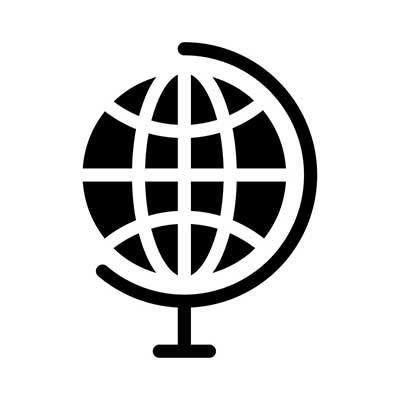Date: 24/11/2022
Relevance: GS-2: India Foreign Policy; Bilateral, regional and global grouping and agreements involving India or affecting India’s interests.
Key Phrases: Russia-Ukraine War, Multipolar World, Indo-Pacific, Geopolitical Agency, Strategic importance,Geopolitical Contestations, New World Order, Shanghai Cooperation Organisation (SCO), G20, Non-Aligned Movement (NAM), Classical View of Polarity, South Asian Regional Subsystem, Balancing Behaviour, 1971 India-Soviet Treaty, North Atlantic Treaty Organization, United Nations Security Council (UNSC), Multilateral Reforms.
Context:
- Recently, India has assumed the chair of the G20 and the Shanghai Cooperation Organisation (SCO), so a reflection on the topic “India as pole’’ has become important.
Why does India prefer being a pole?
- India doesn’t support either side:
- When great powers seek India’s support during geopolitical contestations, such as the one over Ukraine, they end up facing a stubborn India that is reluctant to toe the line.
- India is not a satellite state:
- The inherent reason behind Indian reluctance, however, is not stubbornness but a sense of self which views itself as a pole in the international system, and not as a satellite state or a camp follower.
- India projects the multipolar world order:
- New Delhi’s constant exhortations of a multipolar world are also very much in tune with this thinking about itself as a pole in a multipolar world.
- India has a different position than the two poles:
- India refuses to take sides because it views itself as a side whose interests are not accounted for by other camps or poles.
Panchsheel Principle
- The Five Principles of Peaceful Coexistence are principles first mentioned in the Sino-Indian Agreement, 1954 and publicly formulated by Zhou Enlai.
- These principles would later become the basis of the Non-Aligned Movement.
- The Panchsheel Agreement was signed by Prime Minister Jawaharlal Nehru and Premier Zhou Enlai.
- These principles, also known as Panchsheel, are listed as
- Mutual respect for each other's territorial integrity and sovereignty,
- Mutual non-aggression,
- Mutual non-interference in each other's internal affairs,
- Equality and cooperation for mutual benefit, and
- Peaceful co-existence
India’s Historical Perspective of being Non-aligned:
- India as a different civilization:
- The origins of this thought can be found in the character of the
country’s long struggle for independence-
- The pre- and post-Independence articulations of leaders such as Jawaharlal Nehru, Gandhiji, and Bal Gangadhar Tilak among others on international politics.
- The (not uncontested) primacy India inherited as the legatee state of the British empire in South Asia.
- India’s larger-than-life civilizational sense of self.
- The origins of this thought can be found in the character of the
country’s long struggle for independence-
- Non-Aligned Movement (NAM) Experiment:
- NAM has contributed to India’s desire for a unique foreign policy identity and a voice in the comity of nations. For much of its modern independent history, India’s foreign policy has been a unique experiment.
- Historically, India’s view of itself as a pole is evident in the manner in which it used to pursue non-alignment for several decades after Independence. Some vestiges of this continue to inform India’s foreign policy to this day.
- Misconception between Non-alignment and Neutrality:
- It is also important to point out that India’s non-alignment is often misunderstood given that a number of foreign commentators and practitioners interpret it as neutrality.
- For India, however, non-alignment is not neutrality, but the ability to take a position on a given issue on a case-by-case basis.
India as a Different Pole in International Affairs:
- No domination in the South Asian Region
- India has a different view of itself as a pole.
- It has not actively sought to dominate the South Asian regional subsystem even when it could.
- No preference for an alliance like NATO:
- Its balancing behaviour has been subpar, it has refused to build alliances in the classical sense of the term, or sought camp followers or allegiances.
- As a matter of fact, even its occasional balancing behavior (for instance, the 1971 India-Soviet Treaty during the Bangladesh war) was contingent on emergencies.
- Doesn’t allow interference in south Asia:
- It discourages interference by other powers in that space.
- India supports Global South:
- India often tends to speak for ‘underprivileged collectives’, physical (South Asia) or otherwise (NAM, developing nations, global south, etc. in varying degrees); and it welcomes the rule of law and regional order.
Way Forward:
- Multilateralism should be India’s preferred mode of engagement with other countries.
- Western powers must treat India as a partner rather than as a
cheerleader.
- They should mainstream India into global institutions such as the UNSC, and consult India rather than dictate to India which side to take.
- India should prefer positions that not just suit its interests but are also informed by its sense of being a unique player on the global stage.
Conclusion:
- India has been confidently implementing its approach of becoming a pole by maximizing its convergences without consciously making a friend or foe.
Source: The Hindu
Mains Question:
“In a multipolar new world order, India is presenting itself as a pole”.Critically analyze the statement. (150 Words).







